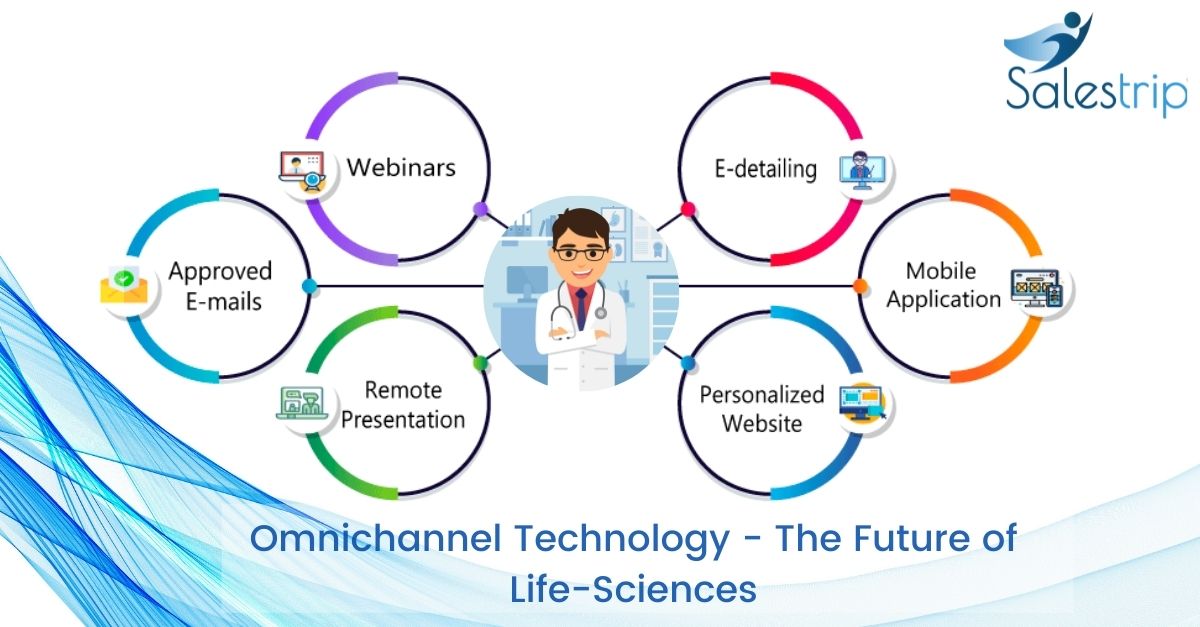The Well-Trodden Path For Medical Device Companies To Increase Sales
Published by salestrip on
The medical device sales after witnessing a negative impact due to corona, the medical device market is expected to recover and grow to $603.5 billion in 2023.

It signals the medical device demand is rising at an astronomical pace, but the companies experiencing high fluctuations in sales. The medical device companies need to work strategically to hold a tight grip in the market and again reach the sales to pre-pandemic levels. Amidst the confluence of competition, increasing regulatory pressure, and buyer influence, technology enablement can help medical companies.
The advanced technology integration helps them remove all the bottlenecks, reinvent the sales process, and respond to the market effectively. However, everything is not so rosy. The companies require retrospect a lot of things and run a deeper assessment of the sales process to figure out what’re the issues and how to overcome them for the winning outcomes. It’s a step-by-step process that medical device companies need to go through for boosting sales effectiveness.
10 Steps To Transform The Sales Process With Technology Leverage
Figure out the current process
The star performer of a leading company when fails to convince the customers, and the same done by an average sales rep of another company indicates the salesperson is missing the mark. The efforts are not aligned with the customers’ expectations. Instead of moving straight to find the exact reason behind the problem, quantifying the sales process is a good idea.
The company should check the following things- leads move out from which stage of the sales funnel; the approach was customer-centric or product-centric; prospects’ reaction to the data; the impact of follow-up in leads conversion. This evaluation gives a clear picture of the gaps that need to fill uniquely.
Sales and marketing functions working as a whole
Sales and marketing departments can’t work separately. Instead, they are inseparable entities without which no department can perform to the notch and enable the company to improve productivity. The integrated sales and marketing functions provide visibility into the customers’ interests, determine the product that benefits the customers, and illustrate how the best value is delivered to them.
It enables sales reps to create a value-based selling strategy, get quality leads, and identify the up-selling and cross-selling opportunities. When integrated sales and marketing functions are complemented with support functions, the sales become more aligned with the customers- in the sense that communication problems or poor experience-related problems get eliminated and customers are approached tactically.
Evaluate sales reps’ time spent on various activities
The sales reps when entangled in non-performant activities, the productivity gets lower and thus, the ROI they generate. In place of engaging the sales reps in administrative activities and downtime activities (back-and-forth to the office to inform about the meetings), they must be engaged in revenue-generating activities along with task prioritization.
The use of advanced tools can help in keeping a tab on the sales reps while they are on the field. Tracking their location and online status showcases how long they have attended one customer and where the rest of the time was spent. Also, real-time updates from sales reps let managers know how they have performed during follow-ups. The real-time feedback could help sales reps in closing the deal.
Route planning must be done intelligently
Manual route planning hardly helps sales reps in visiting the clients in the reduced time and fuel consumption. Sometimes, the traffic congestion, poor road condition, or unexpected weather changes won’t make them reach out to the client at the right time and complete a pre-specified number of meetings in a day.
Optimizing the route planning with technology leverage is the best solution. However, before you go with route optimization, territory planning is all-important that starts with territory categorization and assigning to the sales reps. The digital route planner automatically plans the best routes according to schedules to increase the number of F2F meetings. The route planning tool automatically makes changes in the route when changes in schedule or problems in the way are found. It helps in reducing idle time, fuel consumption, and maintenance charges.
Estimate the time spent in F2F meetings
The F2F meetings are of high potential that mostly results in a conversion. However, it’s not necessary all the time. The in-person meeting when not driving result means either the meetings are of a couple of minutes or the interaction was of no value. Both cases are not good for the company’s productivity.
The former reason indicates that sales reps won’t have insightful information that makes the HCPs listen to them for long. The latter case indicates that HCPs are interested in the product, but they don’t find any value during the communication.
Technology leverage enables sales leaders to track everything from the total time spent on visiting a client to the time spent in F2F meetings. Evaluating these things help in finding the gaps and the actions that can fill the void.
Tracking sales reps on the field in real-time
The sales leader when having data related to what the sales reps doing on the field in real-time can better guide them and uplift the probability of conversion. The Salestrip-like software provides an interactive dashboard that allows sales managers to view the performance of the team in real-time, make changes in the assigned tasks, and inform the same to the team immediately.
It also gives insights into the hectic schedules of the sales reps, pipeline velocity, and then allows them to create new strategies for improved performance.
Ensure the sales reps are up-to-date with inventory levels
The sales reps when promising the HCP for the products’ demand to meet and fail to meet them, ruins the trust in the company, and the chances of losing the customer exist too. Sales reps need to have visibility into inventory levels so that they can make the right decisions while making supply/demand balance. It results in diminishing overselling and out-of-stock.
Salestrip enables maximum usage of inventory in productive territories. The real-time updates about inventory levels allow them to make the right decision beforehand without getting entangled in out-of-stock issues.
Keep the sales team motivated
The real-time sales team performance data is of great value that’s utilized for instilling motivation. The team goals when gamified, encourages the team to go beyond to earn accolades, rewards, and recognitions. Empowering the sales team helps in capitalizing on the opportunities and responding to the changing customer behavior.
The empowerment practices must be agile that makes the sales team on their toes to engage the customers and drive the leads down the sales funnel.
Expense reimbursement should be done quickly
Sales reps when visiting the clients at distance, then spend dollars from their pocket and submit the bills for reimbursements. Sometimes, the complexities or delays made in approval ruffle up the customers’ feathers. It can be avoided by maintaining a record of sales activities performed. The software creates reimbursement reports based on the activities to perform approvals faster. The consistent evaluation of the reports helps in identifying red flags and preventing funds misuse.
Conclusion
It’s rightly said that technology has an answer to every problem in the universe. Technology enablement in the pharma industry enables pharma companies to improve the medical device selling efficiency. The scalable solution meets the needs with a predictable sales process and actions required to be taken. The article has perfectly illustrated how and where technology implementation can help pharma companies to raise a toast to success.







